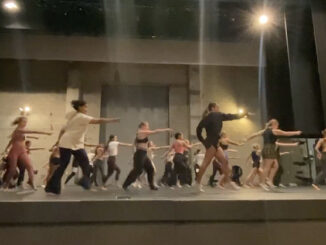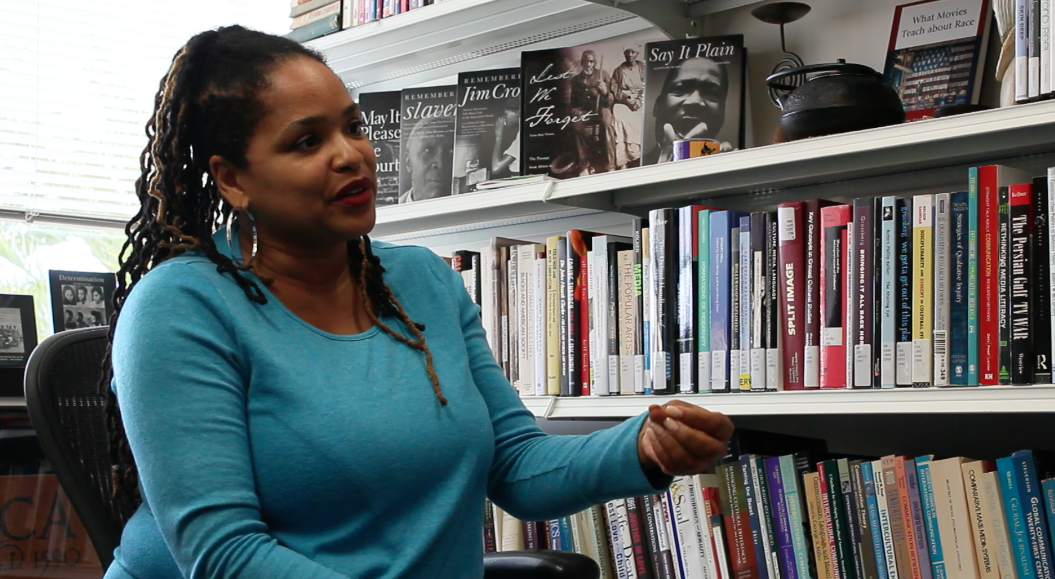
A member of the Pepperdine swim and dive team kept her 185 followers updated as she tweeted, “Pepperdine here’s to you. #WavesUp @plainwhitets,” during the Waves Weekend concert on Oct. 18.
The women’s soccer team won against University of Southern California Nov. 16, and Alina Ching, a senior on the women’s golf team, showed her support by tweeting, “Great playing today @PeppSoccer #GoWaves #ontothenextone.”
Grace Na, a former member of the women’s golf team who graduated last year, tweeted a picture of herself at the season opening of the men’s basketball team Nov. 14, with the caption, “Game day #WavedUp #AyoWaves.”
By living out the school’s mission for student-athletes to compete with purpose, the Pepperdine Waves are the university’s No. 1 brand ambassadors on social media.
Roger Horne, director of Athletic Communications, said student-athletes are the best brand ambassadors for Pepperdine because they are the ones who are most visible.
“A student-athlete who tweets something about the golf program, about the basketball program or about the baseball program, coming from a person that is involved, that’s meaningful,” Horne said. “What they say about the team is just so powerful.”
Na said that as a student-athlete, she always felt an obligation to act appropriately on social media as a representative of the university.
“There is a little bit of pressure just because you know what Pepperdine represents and you don’t want to disgrace the school,” she said. “So there is somewhat of pressure, but I don’t think it’s unreasonable.”
Pepperdine Athletics makes a point to teach its student-athletes that social media is not just a toy, but a tool that can have an impact on every student-athlete’s future, as well as the overall image of the university.
At the beginning of every school year, each student-athlete must sign a student-athlete branding policy. Student-athletes represent themselves, their family, their team and the university, so there are guidelines they must follow to minimize negative exposure, officials said.
- They are not allowed to promote a company or a business, because that would make them ineligible to play, according to the National Collegiate Athletic Association compliance rules.
- The information they post on their social media sites must not violate the Pepperdine University code of conduct.
- They should refrain from posting when they are emotional, such as after a game, because they are more likely to post something they will regret.
Horne said there have been occasions where he saw something on social media that crossed the line in terms of what is in the personal branding policy. In those cases, he lets the student-athlete’s coach know about it, and then it is up to the coach to decide what to do, whether it is a warning or some sort of disciplinary action.
Na said it is reasonable for the Athletics department to have student-athletes sign the personal branding policy because it benefits both them and the school.
Members of the media, such as Gregg Doyel, a columnist for CBSSports.com, are always aware of what student-athletes post on social media.
“If they screw up, I’m waiting. That’s right: me. Me, and thousands of people just like me,” Doyel wrote in a column on CBSSports.com. “If a college athlete says the wrong thing on Twitter, people like me are going to hear about it. We’re going to talk about it on the radio and write about it in the newspaper or on the Internet. By the time we’re finished, the player’s name will be in shambles and his coach will be performing damage control. As for us, we leave the wreckage in our rearview and move on to the next guy.”
Potential employers, internship supervisors and scholarship committees also look at student-athlete’s social media sites to screen candidates and applications. A student-athlete’s social media footprint is their online resume.
Reppler.com surveyed 300 professionals who are involved in the hiring process at their company, and 91 percent use social media sites to screen prospective employees, while 69 percent rejected a candidate because of what they saw on their social media sites, such as inappropriate photos or comments and poor communication skills.
Na said having followers aware of what she is doing is a positive drive more than a fear of pressure. It reminds her of what kind of person she needs to be.
According to Doyel’s column on CBSSports.com, Boise State’s Chris Petersen was the first college football coach to ban his players from tweeting. Other coaches followed Petersen’s lead, such as college basketball coach Rick Stansbury of Mississippi State.
Steve Rodriguez, the head coach of the Pepperdine baseball team, said he knows that social media can be dangerous if his players decide to post something that is not favorable because there will be consequences, although he does agree that if used correctly, it can have a positive impact.
“I really like when they’re active on social media,” Rodriguez said. “Especially when they’re putting everything out there about Pepperdine, our team and themselves in a great light. All the things we do — from our location, to our school, to our team. Those are all great things to share with people, because that’s what makes us who we are.”
Jessica Mosbaugh, a junior on the swim and dive team, uses Twitter to share her life as a student-athlete with her followers.
“Today was such a great day! My team is the best team!” Mosbaugh recently tweeted.
Pepperdine Athletics is able to set itself apart from the athletics departments of other universities on social media by showcasing that their purpose encompasses more than just winning championships, because they are also committed to teaching their student-athletes to compete with passion, find purpose, serve others and lead by example.
After a competition, Pepperdine Athletics writes about the team result and focuses on a student-athlete who does something special. For example, men’s golf improved their standing after the second round of the Alister MacKenzie Invitational on Oct. 14. Pepperdine Athletics wrote about how the team went up on the leaderboard, but also pointed out that sophomore Robin Kang had the best round of the day.
Na said Pepperdine’s mission statement and values are very different from those of other schools.
“I think we value our athletics department very much because they make sure that our athletes are representing Pepperdine positively as a person more so than an athlete, because we know sports is just what we do, it’s not who we are,” Na said.
Lorraine Guillermo, a senior on the women’s tennis team, said she supports what Pepperdine Athletics does on social media.
“I like what they do with social media, because they use the ‘Competing with Purpose’ campaign to promote that we are not just competing in athletics, but also for a higher purpose,” Guillermo said.
Steve Potts, the director of Athletics, said Pepperdine Athletics exists to further the Christian mission, to ensure student-athletes have an enriching and rewarding academic experience and to compete for championships.
“The most important of all that is the order,” Potts said. “It’s not a random order. It’s one, two and three. Two out of three is not good enough. Pepperdine Athletics’ success is all three. And I think that’s probably not the way it’s described on other campuses.”
Andie Unson completed this story in Professor Wendy Fontaine’s fall 2014 Jour 241 class.



